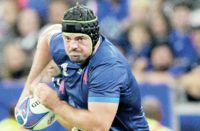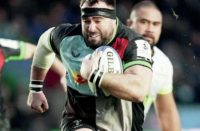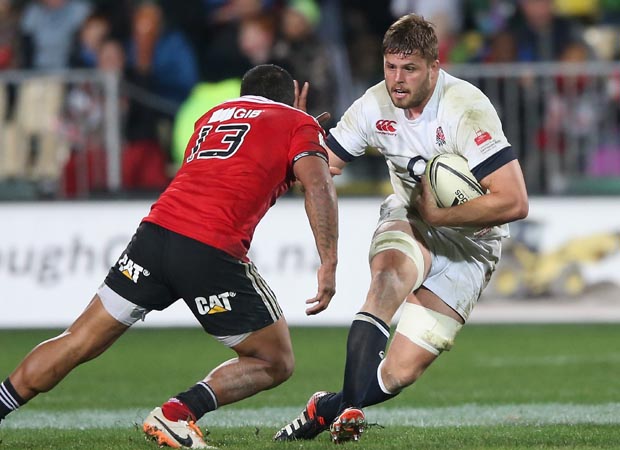 The heat has been turned up following England's blackwash in New Zealand with the All Blacks and their cheerleaders in the Kiwi media jostling to claim a significant psychological edge as both teams set their sights on the 2015 World Cup.
The heat has been turned up following England's blackwash in New Zealand with the All Blacks and their cheerleaders in the Kiwi media jostling to claim a significant psychological edge as both teams set their sights on the 2015 World Cup.
While some Kiwi scribes rubbed salt into English wounds by saying that Chris Robshaw's men had capitulated in the first half of the third Test in Hamilton, New Zealand coach Steve Hansen reined himself in enough to say instead that his team now held the Indian sign over the 2015 tournament's host nation.
Reflecting on New Zealand's 36-13 victory Hansen said: “Psychologically it hurt them, particularly that first half. There was really only one side in it in that first 40 minutes. I think that might have hurt a bit.”
Hansen left no one, especially Stuart Lancaster and his apparently defeated and deflated squad, in any doubt about the benefits of the three nil series win.
“It's always good to have a psychological advantage, but the key thing was that we played well. We made progress from Test one through to Test three. That was something we desperately wanted.”
New Zealand pundits waxed lyrical that one of the most satisfying aspects of the progress Hansen talked about was the way that ageing All Black forwards, such as captain Richie McCaw and loose-head Tony Woodcock, had re-establish their credentials in what they hailed as a dominant pack.
They claimed that the English bullyboys, far from smacking New Zealand around, had been schooled in the forward arts by the All Blacks.
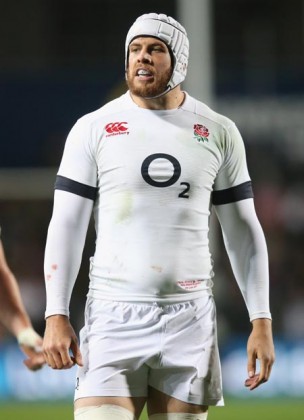
Wheeling out old stereotypes is a favourite Kiwi pastime, and England forwards are normally portrayed as slow, muscle-bound orcs with the zero footballing ability. The Red Rose class of 2014 were no different according to a report in the Kiwi Herald on Sunday, and the English forwards got their comeuppance – so we were told – at the hands of the superbly muscular All Blacks.
Their version of events was that the New Zealand forwards had out-scrummaged Robshaw's men, made their lineout look second rate, stopped their driving maul in its tracks, clobbered their carriers around the fringes, and smashed them at the breakdown.
From that description it was not so much advantage All Blacks as an annihilation of England's much vaunted forward strength. While it is fanciful to draw that conclusion from a close-run series decided mainly by the superior speed and finishing skills of the All Black backs – New Zealand scored nine tries to England's four, with none of them coming from a forward – issues were raised on this tour about England's forward strength that cannot be ducked.
Lancaster's side are at the crossroads in terms of the style they want to play, and the composition of the pack reflects that dilemma. So far, the England head coach's front five selection has mimicked the All Blacks in terms of putting mobility and footballing skill ahead of power.
What is at issue is whether England continue down that path, with the intention of outdoing New Zealand for athleticism and skill, or opt for size and strength, like the South Africans, with the aim of dominating and smashing through anything standing in their way.
My view is that the best use of England's considerable forward resources is to find a route somewhere between the two, with the proviso that muscling up is essential because, as things stand, they lack the physical clout to force either the Springboks, the All Blacks, and, crucially their fast improving pool opponents, Australia, onto the back foot.
Any exceptional pack is built on complementary strengths and at the moment there are imbalances in each row of the England scrum which throw those out of kilter.
At tight-head neither David Wilson nor Dan Cole, when he returns from injury, offer England the combined power and mobility that an All Black rival like Owen Franks delivers. However, the remarkable gains made last season by Kyle Sinckler suggest that England could have a rare talent coming through who could rival Franks.
At the business end of the Premiership season Sinckler remained impressive, to the extent that he was never upstaged by much more experienced props. Furthermore, his barnstorming effort against the Crusaders, where he held steady at the scrum and barrelled forward in the loose, indicated that he has the physicality to cope at elite level at the set-piece as well as around the pitch. Late cameos by Kieran Brookes in Dunedin and Hamilton also suggested that if he can stay fit the big Newcastle man – who is a stone heavier than Franks – could provide further competition for Wilson and Cole, at last bringing some competition to the anchor role in the scrum.
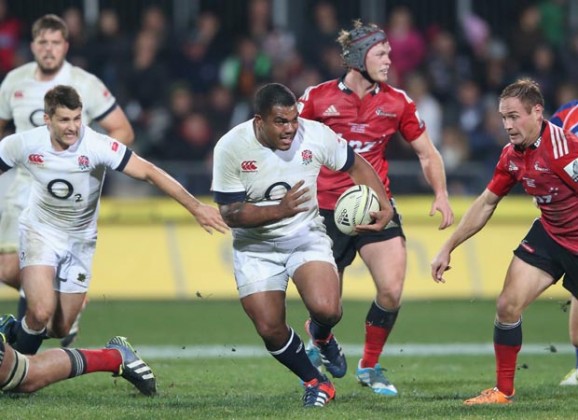
It is also imperative with the new scrum laws that England develop hookers who can actually hook the ball and deliver it quickly into the hands of the No.8. Rob Webber strikes more cleanly than either Dylan Hartley or Tom Youngs, and combined with straight, powerful carrying the Bath No.2 advanced his cause on tour.
Too much of England's scrummaging is based on holding the ball in and forcing penalties from opponents – especially those in the Southern Hemisphere – who are not used to staying engaged, and therefore infringe. It is a useful weapon to have in your scrummaging armoury, but it should not be the only one you have at your disposal.
Once the New Zealand scrum coach, Mike Cron, had twigged what England were doing following the first Test, he made the necessary adjustments. Thereafter, although the penalty count at the scrums may have favoured England marginally, it was the All Black platform which produced the cleaner, faster ball for its scrum-half. This had a significant bearing on Aaron Smith becoming one of the players of the series. By contrast England's scrum ball was often slow and scruffy, and despite Ben Morgan's relieving charge out of the 22 in the first Test, it was not an effective platform in launching attacks.
Given that Dane Coles is not the most experienced or physically imposing hooker, and that Joe Marler has developed into England's most consistent and effective loose-head, there was a sense of a missed opportunity to prize open fisures in the New Zealand scrum.
There is definitely a case to be made for an aggressive young tight-head like Sinckler to be used in tandem with an old hand like Cole or Wilson when these two teams meet in the autumn. As for hooker, the best striker and lineout thrower should win the shirt.
At the end of the series Hansen was also boasting about the calibre of his second row pairing of Brodie Retallick and Sam Whitelock, saying, “They could be the two best locks in the world at some stage”. There is no question that they are both good all-rounders, with Retallick in particular making sure that New Zealand's lineout ball was smooth and accurate while also galloping around to good effect in the loose.
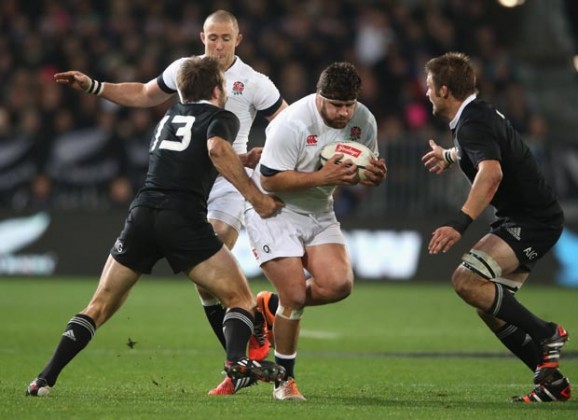
However, while they had a good series, they are hardly in a different league to Courtney Lawes or Geoff Parling as line-out targets, or Dave Attwood and Ed Slater as ball-carriers. Furthermore, for the first 25 minutes in Dunedin, the All Black forwards had great difficulty containing England's driving maul. So much so, that it is hard to understand why they abandoned it in favour of the high tempo fling which played straight into the hands of the hosts.
What was interesting was that by the third Test New Zealand were countering Lawes by hoisting him up by his shorts so that he was forced onto his tiptoes, making it more difficult to drive on him.
Lawes has too many attributes to sacrifice them just because he is at least a stone lighter than most international locks, but in my book that is what makes it imperative to pair him with a heavy-duty lock like Attwood. It is hard to believe that if Graham Rowntree and company finally gave their backing to the big Bath man that there is nothing that Retallick does for New Zealand that he could not do for England.
Which brings us to the back row, the most contentious unit of all. Ed Slater's captaincy of the midweek side against the Crusaders was mightily impressive, and that, combined with his exceptional form last season, convinces me that he should be part of the England pack right now.
It could be that you keep him at lock, leaving him to battle it out with Attwood for the honour of being the tight-head minder to Lawes (or Parling). However, the alternative is to use his grappling and mauling strength, as well as his lineout ability, to forge him into a classic English blindside.
Slater is no stranger to the No.6 role having played there at times for Leicester, and while at 6ft 6ins and just over 18 stone he does not cover the ground with the speed of Tom Croft, Tom Wood, or James Haskell, he is no slouch. What he brings on top is an abrasiveness and raw strength in his carrying game that his rivals do not.
Wood, in particular, does not make enough yardage around the fringes not because he lacks ferocity or willingness, but because in the land of the behemoths, at barely 17 stone (109 kg) he lacks the tonnage to crash the barriers. Both he and Lawes could do with a few extra kilos of muscle, and it is surprising that so far England's conditioning department have not made that a priority.
Haskell made a strong bid in New Zealand to get back into contention, and his credentials stack up in terms of size and power at blindside, while if Croft returns as fast as he was pre-injury – and it is a big ‘if' – it guarantees at least one back row forward with burning pace.
That leaves the battle for the No.8 slot between the two most aerobically challenged heavyweights in the England back five, Billy Vunipola and Ben Morgan. At the end of last season it was Vunipola's shirt to lose, but against the All Blacks they both seemed well short of a gallop.
In the end, it is work ethic that will get one or other over the line. The most obvious challenge to set them is to see who can become an 80 minute man first, because neither of them are close – and that for a pro international back row forward is plain unacceptable.
Last but not least, openside flanker. If England are looking at a slower tempo with a grinding pack then, in some ways, Robshaw is in his element. However, England will still need the capacity to bewilder the opposition by changing pace rapidly and going wide, and for that they will need a fast No.7 marauder who can win quick ball for England and put the brakes on the opposition.
Matt Kvesic did enough against the Crusaders to rekindle faith, and it remains to be seen if Will Fraser can hit the ground running after his injury problems. However, the elephant in the room at Lancaster's next selection meeting will be Steffon Armitage, because the trip to New Zealand has shone a brighter spotlight on specialist No.7s than has existed at any stage in his coaching tenure.
What the England head coach does to resolve it, along with the other rebalancing required in the pack, will go a long way to determining whether New Zealand's forward gains are revealed as substantial, or mere spin, when the teams meet again at Twickenham in the autumn.
*This article was first published in The Rugby Paper on June 29.


